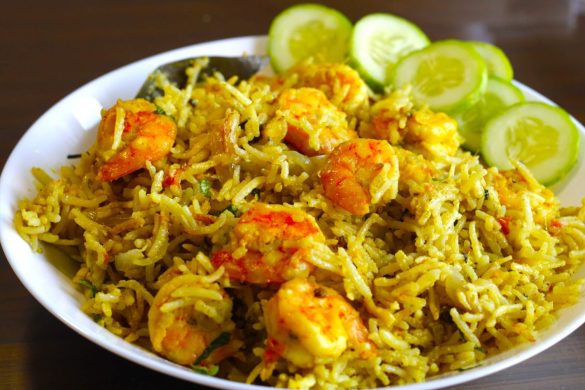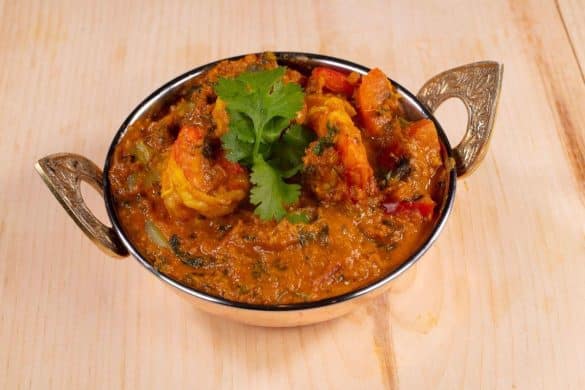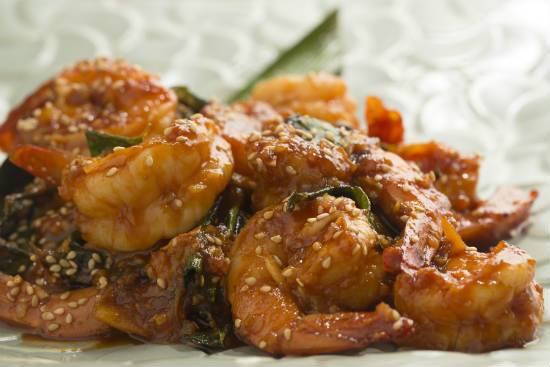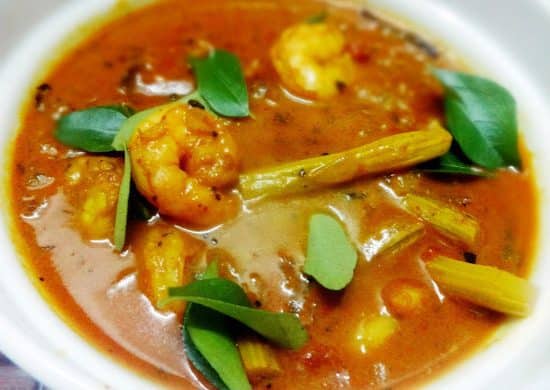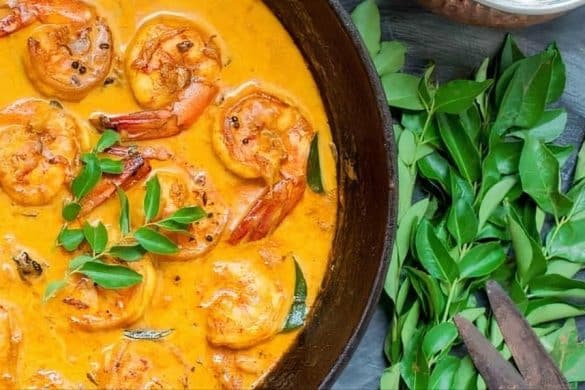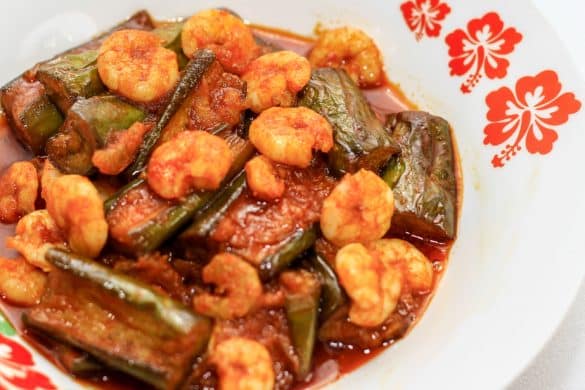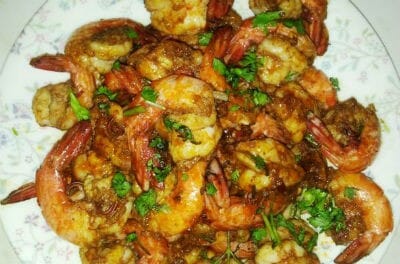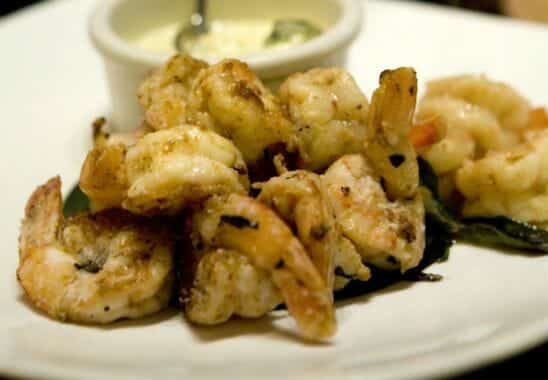This richly flavoured coconut shrimp curry is a taste of tropical bliss. Juicy prawns simmer in a creamy coconut sauce infused with aromatic spices, making it a delightful and restaurant-worthy dish.
If you’re craving a burst of flavours from the coast, this coconut jhinga curry will surely transport your taste buds. Plump, succulent prawns luxuriate in a velvety coconut gravy deeply perfumed with a symphony of spices. Each bite is an exotic escape.
About the Recipe
This coconut jhinga curry is a coastal classic that deserves a spot on your must-try list. The prawns are the real star, cooked to perfection in a luscious coconut gravy that’s both creamy and complex. The blend of spices will make your kitchen smell like an Indian beachside cafe.
Why You’ll Love This Recipe
Let’s be real – who can resist plump, juicy prawns swimming in a rich, fragrant sauce? This coconut jhinga curry ticks all the boxes for flavor, aroma, and sheer indulgence. The combination of warming spices like coriander, chili, and turmeric creates a beautifully balanced blend complemented by the soothing sweetness of coconut. It’s a dance for your tastebuds.
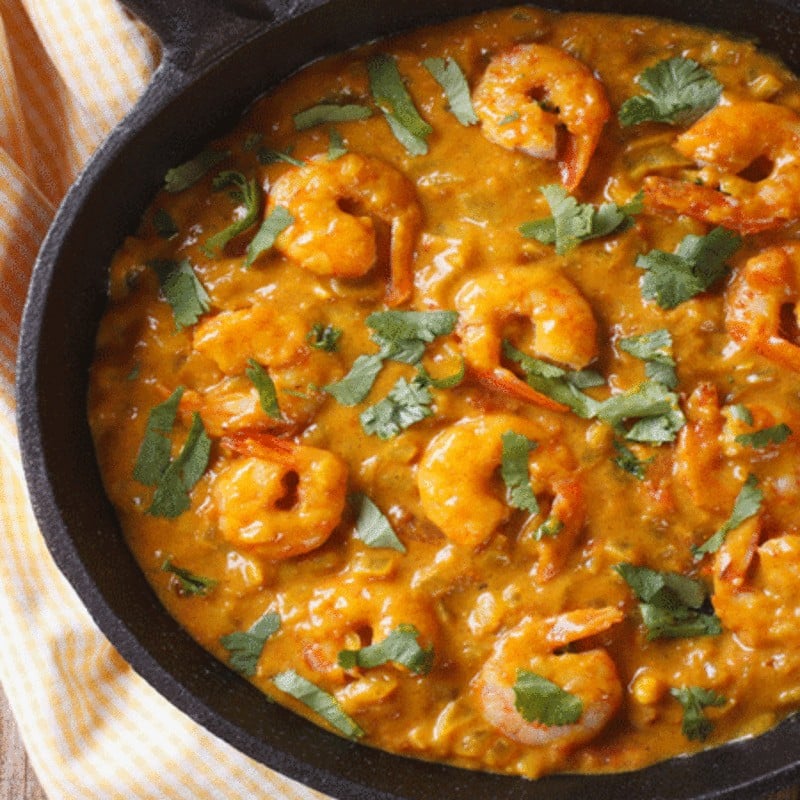
Coconut Jhinga Curry
Cooking Tips
For the best results, use fresh prawns and don’t overcook them – you want them tender and juicy, not rubbery. Let the spices sizzle in the oil before adding other ingredients to really intensify the flavors. And don’t skip the garnish – fresh coriander brightens up the dish.
Serving and Storing Suggestions
This curry makes a generous 4 servings. It’s best enjoyed fresh off the stove with fluffy basmati rice to soak up all that glorious sauce. Leftovers can be refrigerated for 2-3 days. Just add a splash of water or coconut milk when reheating to loosen the sauce.
Similar Recipes
- Goan Fish Curry
- Malvani Shrimp Curry
- Kerala Prawn Curry
- Konkan Seafood Curry
Nutrient Benefits
Prawns are an excellent source of lean protein and nutrients like selenium, vitamin B12, and iron. Coconut provides healthy fats and a dose of manganese. With aromatic spices like turmeric, this curry also offers anti-inflammatory benefits.

Coconut Jhinga Curry
Ingredients
- 1 kg Prawns
- 5 tbsp Coconut (grated)
- 4 tbsp Groundnut Oil
- 1 tsp Mustard Seeds
- 1 cup Onions (chopped)
- 4 tsp Garlic Paste
- 4 tsp Ginger Paste
- 2 tsp Coriander Powder
- 2 tsp Red Chilli Powder
- 1/2 tsp Turmeric Powder
- Salt to taste
- 1 1/2 cups Tomatoes (chopped)
- 4 tsp Green Coriander (chopped)
- 10 Curry Leaves
Instructions
- Shell, devein, wash and pat dry the prawns.
- Blend the coconut with 1/4 cup of water and make a fine paste.
- Heat the oil in a pot and crackle the mustard seeds, then saute the onions over medium heat till transparent.
- Add garlic and ginger paste.
- Stir and cook till the liquid evaporates.
- Add coriander powder, red chilli powder, turmeric powder and salt.
- Stir well.
- Then add the tomatoes and cook till they are mashed.
- Reduce to low heat.
- Add the coconut paste and the curry leaves.
- Stir for two minutes.
- Add the prawns and 1 1/2 cups of water.
- Bring to a boil.
- Reduce on low heat and simmer, stirring occasionally, until the prawns are cooked.
- Transfer to a bowl.
- Garnish with coriander.
- Serve hot with boiled rice.
Sign up for our newsletter
Frequently Asked Questions
Can I use frozen prawns?
Without a doubt. Just be sure to thaw them fully before cooking. Pat them dry and follow the recipe as usual for tender, flavorful shrimp.
Is this curry spicy?
This curry has a nice kick from the chili powder, but you can easily adjust the heat level to taste. Start with less and add more if you prefer an extra fiery punch.
Can I use coconut milk instead of grated coconut?
You can use around 1 cup of thick coconut milk instead of the grated coconut paste. The sauce may be a little thinner, but still utterly delicious.
What sides go well with this curry?
Fluffy basmati rice is a must to soak up all that luscious sauce. But you can also serve this with Indian flatbreads like naan or roti, a fresh salad, yogurt raita, or sauteed greens.
How do I clean and devein prawns?
Merely use a sharp paring knife to make a shallow slit down the back and remove the vein. The shells can be left on for more flavor while cooking and peeled before eating.

